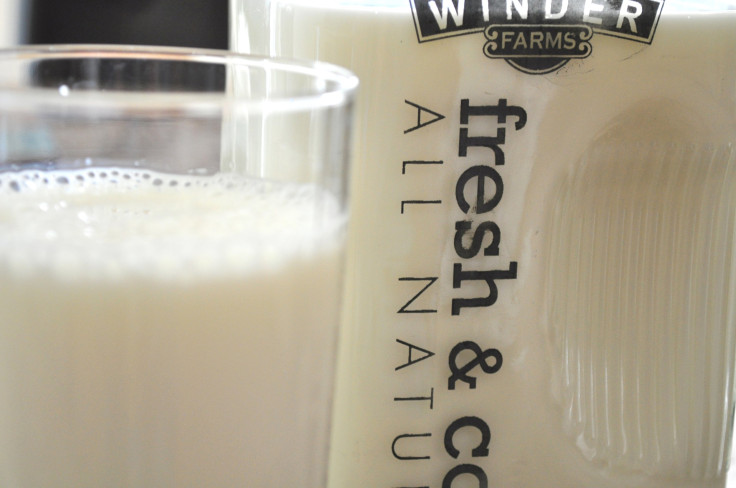Is Organic Milk Worth It? Pricier Option Is Healthier Than Conventional Competition, Has Higher Levels Of Omega-3 Fatty Acids

A favorite for many country naturalists, raw unpasteurized milk is a grey market commodity, like venison or bear meat — with a hint of danger, à la food-borne illnesses. In the mainstream supermarket, however, organic (and pasteurized) milk offers the consumer a safer thrill, with newly discovered health advantages over conventionally produced milk.
In a new study, investigators from Washington State University compared organic and pasteurized milk throughout the United States, testing nearly 400 samples taken from an 18-month period. Whereas pasteurized milk scored an average omega-6 to omega-3 fatty acid ratio of 5.8, raw milk scored a much lower, healthier ratio of 2.3.
Charles Benbrook, the study’s lead investigator, said Monday the difference was made by a greater reliance on pastureland and forage-based feeds used by organic dairy farmers. As opposed to grain feeds, a preponderance of scientific evidence shows the superior benefits of feeding cows grass and legumes over an open pasture. However, the team didn’t expect to see such dramatic differences.
"We were surprised by the magnitude of the nutritional quality differences we documented in this study,” Benbrook said to NBC News.
Although many naturalists, of course, spur dairy as unnatural, the category continues to grow. Organic milk and cream sales totaled $2.622 billion last year, within an organic food industry worth some $29 billion. Nationally, organic milk now accounts for 4 percent of milk sales, according to the Milk Processor Education Program.
Previous research has shown the risk of consuming diets with higher proportions of omega-6 fatty acids, including cardiovascular disease, cancer, excessive inflammation, and autoimmune diseases, with increasingly higher ratios bringing higher health risks. According to Benbrook, Westerners typically consume diets with ratios of 10-1 or even 15-1, compared to an ideal of 2.3-1 for maximum heart benefit.
Nearly 40 percent of that difference from average to ideal could be achieved by simply switching to organic milk, investigators say. A typical woman might replace three daily servings of conventional dairy products for 4.5 daily servings of mostly full-fat organic dairy products, taking care, too, to avoid other foods high in omega-6 fatty acids.
"Surprisingly simple food choices can lead to much better levels of the healthier fats we see in organic milk," Benbrook said.
Even compared to fish, long touted as the omega-3 super food, organic milk is the densest source of the fatty acids, investigator Donald R. Davis said in the statement. "We were surprised to find that recommended intakes of full-fat milk products supply far more of the major omega-3 fatty acid, ALA, than recommended servings of fish,” he said.
In the study, conventional milk contained nine times as much ALA as fish, while organic milk contained even more — 14 times as much.



























